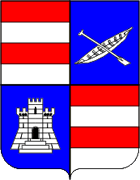Top attrazioni turistiche Dubrovnik - Dalmazia . Scopri, esplora e visita attrazioni naturali e culturali, eventi e punti di interesse, i migliori ristoranti e bar e trascorri una vacanza indimenticabile nella regione Dubrovnik - Dalmazia!
Dubrovnik - Dalmazia

Dubrovnik - Repubblica croata! Libertà e bellezza! Scriveremo su questi due termini che meglio descrivono Dubrovnik e l'intera area dell'ex Repubblica di Dubrovnik. La parola libertas è iscritta sulla bandiera di Dubrovnik, e ancor più nelle anime dei residenti di Dubrovnik. La bellezza delle mura della città, le isole Elafiti, l'isola di Korčula e Mljet e la penisola di Pelješac è qualcosa che devi vedere e provare per te!
La storia di Dubrovnik iniziò nel VII secolo quando i latini fuggirono da Epidaurum e invasero Avar e Slavi. Hanno fondato la città di Ragusa, l'odierna Dubrovnik. Sulle pendici meridionali della collina Srđ, gli slavi hanno iniziato a costruire il loro insediamento, che è stato chiamato Dubrava dal nome di foreste di querce. Più tardi, quando Latini e Slavi si unirono e mischiarono, divenne il nome della città. Nei primi secoli, Dubrovnik era sotto il dominio bizantino. Dopo il dominio bizantino cade sotto il dominio di Venezia. Dopo il 1358 fu sotto il dominio del regno ungherese. Tuttavia, dal 1380 al 1806, Dubrovnik era una repubblica veramente indipendente. Dubrovnik ha sviluppato un complesso commercio marittimo nel Mediterraneo e nel mondo. Divenne una repubblica aristocratica e stava diffondendo il suo territorio, costruendo oggi famose mura e la sua marina. Nel 16 ° secolo era una delle più grandi flotte commerciali del mondo! Oggi, Dubrovnik è una destinazione turistica famosa in tutto il mondo, le cui pareti spettacolari, le strade lastricate in pietra, in particolare Stradun, il palazzo del principe e molti altri semplicemente devono essere visitati almeno una volta nella vita. L'offerta di alloggi è ampia, dalle camere ai numerosi hotel di lusso, appartamenti sulla costa e case per le vacanze ad alloggi privati più economici. Il modo migliore per trovare una sistemazione è stabilire un contatto diretto con i proprietari di alloggi senza pagare alte spese di agenzia.
Le isole Elafiti, che prendono il nome dalla parola greca elaphos (cervo), si trovano di fronte alla costa di Dubrovnik e sono composte da Šipan, Koločep, Lopud e diverse isole minori. Sono ben collegati da traghetti e linee di traghetti per Dubrovnik. Rimarrete incantati dalle splendide spiagge sabbiose e da una moltitudine di antiche chiese e case estive. È interessante notare che non ci sono automobili a Koločep e Lopud che le rendono perfette per una vacanza lontano dal caos della vita moderna.
Korcula è un'isola abitata fin dai tempi preistorici e in seguito dalla Grecia quando fu chiamata KorkyraMelain, cioè dai Romani KorkyraNigra e con lo stesso significato - Black Korcula. Korčula deve il suo nome alle foreste buie e ben conservate che sicuramente ti affascineranno. Di fronte alla costa della città di Curzola si è svolta la famosa battaglia nel 1298, tra i veneziani e Genova. Si ritiene che il leggendario esploratore Marko Polo sia nato a Korcula. Oggi, Korcula è un'isola con più di 16.000 abitanti e insediamenti più grandi sono la città di Korcula, Blato al suo interno e Vela Luka. L'isola dal fascino indescrivibile è piena di appartamenti economici sulla costa, case per le vacanze e stanze in affitto. Hai la possibilità di prenotare la tua sistemazione ideale in contatto diretto con i proprietari dell'alloggio. La penisola di Pelješac è una delle più belle penisole della Croazia con molte spiagge e vini di buona qualità. Qui si trova la città di Ston, che ha una delle pareti più lunghe in Europa e Orebić, popolare destinazione turistica. Nella regione di Dubrovnik si trova il delta del Neretva, che è un posto molto interessante a causa della fauna selvatica, molte specie di uccelli e lunghe spiagge sabbiose.
E infine Mljet, l'isola delle pinete, laghi mescolati con acqua dolce e salata, monasteri benedettini e leggende. L'isola è stata visitata da Ulisse e San Paolo secondo la leggenda ed è sicuramente il posto che devi vedere e sperimentare. Mljet è considerata la più pittoresca isola croata, quindi la parte occidentale è protetta come il primo parco nazionale in Mediterraneo. Mljet è ben collegata con le linee di traghetti per la terraferma, e sull'isola ci sono molti taxi boat privati, quindi la scusa per non visitare questa magica isola non esiste! Vi auguriamo un caloroso benvenuto a Dubrovnik e nei suoi dintorni e speriamo che trascorrerete una vacanza indimenticabile nell'estremo sud della Croazia e della Dalmazia!
La nostra raccomandazione
Dubrovnik - Dalmazia
